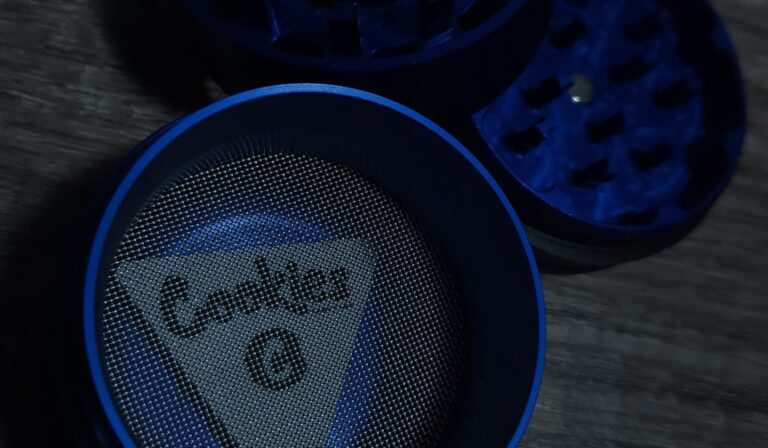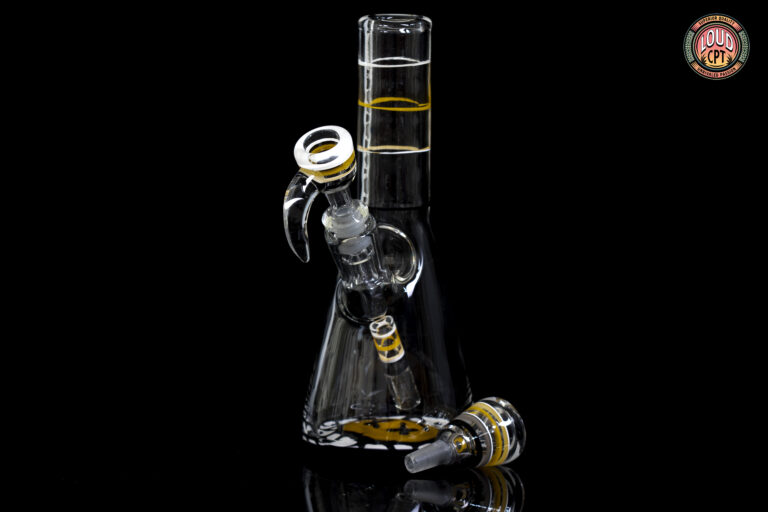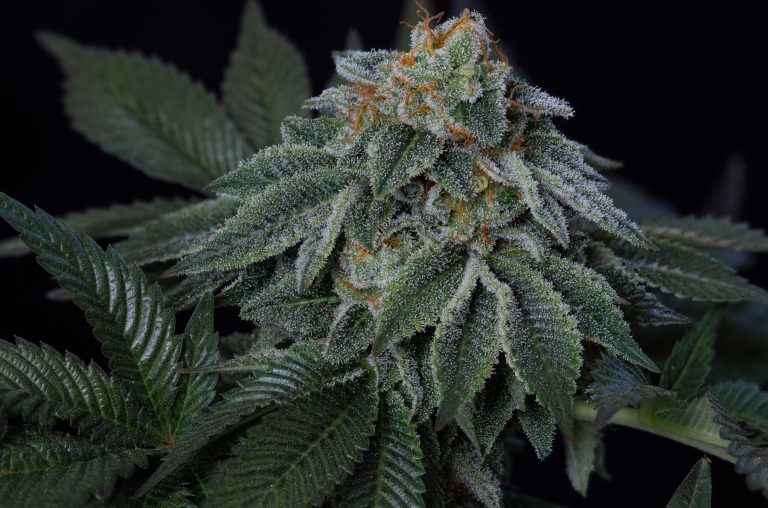Extraction Insight – An Interview with Nug Nursery
Jump to the start of the interview
Welcome to the wormhole; in this article, we chat with Nug Nursery, one of South Africa’s leading purveyors of craft extracts. But in case you’re not already clued in with the world of extracts, let us quickly introduce you.
Cannabis extracts may appear simple in nature to the uneducated, given that extraction in botany is something that has a long history and wide usage, especially in the establishment of commercial essential oil products. However, the extraction of terpenes and cannabinoids from cannabis goes far deeper than most traditional oil extraction. We see multiple different methods ranging from old-school traditional methods like hand-rubbed charas through to more modern and mechanic methods of distillation, for example.
One form of modern extract that has boomed over the last 5 years and more recently become more refined is rosin. Rosin is produced by two heated plates, which are pressed together under intense pressure to push out the oils, which can then be collected from the parchment paper. One of the problems with this method is that the high pressure also pushes out other parts of the plant, such as natural waxes and lipids, which lower the purity of the rosin.
This brings us to hash rosin, a more refined and cleaner version of rosin where two extraction methods are used in conjunction with one another. We’ll spare the details, but when done properly, this method is more complex, more timing consuming, and a lot more expensive due to the use of freeze dryers. Because one ends up sacrificing yield for quality, and because of the large investment costs, we don’t see a lot of hash rosin being produced locally yet.

Discussing Extraction With Nug Nursery
Nug Nursery was one of the early local adopters of this method of extract and very quickly started showing the country his dedication to the craft, producing beautiful extracts that can even compete with the high standards we’ve seen set in the United States. Having smoked my share of Nug Nursery products, it was great to be able to chat with him about some of the topics I, as well as others, may have an interest in hearing about.
How did you first get started with extracts?
I first consumed cannabis extracts (excluding traditionally pressed hashish) in 2015 in Colorado. As a biologist, I was immediately intrigued by the various extraction methods and soon stumbled my way down the deep rabbit hole that is cannabis extracts.
Have you always worked with solventless? Or was there a progression from BHO to rosin?
My personal extraction journey began with cryogenic ethanol extraction, but I soon transitioned to solventless for the love of terpenes. I have very limited hands-on experience with BHO extraction, although I have been exposed to closed-loop systems and vac oven procedures.
The way you approach rosin is clearly one of a craft nature, with a focus on perfection. What are the biggest challenges for you when coming up with a premium product?
The biggest challenge for me is consistently producing high-quality extracts from various input materials. The art lies in understanding the cultivar and the conditions it was cultivated in and subsequently fine tune the extraction methodology. Another big challenge for solventless extraction in South Africa is finding input material of a sufficient quality that has been cultivated with the intent of resin collection.
Tell us a little about your growing style.
My preferred growing style is in large, no-till, open-bottom, living soil containers.

It’s not uncommon for hash makers to chop early to improve colour. Do you find that it’s beneficial to chop early, or do you flower them out until you feel each cut is matured?
Harvesting for hash rosin requires a fine balance of milky to amber trichomes. For flower production, it is possible to push the plant to a later stage of maturation as amber (burst) trichomes have no effect on the final yield. Additionally, the progression of the cannabinoid and terpene composition lends itself to harvesting later for smokeable flower. For hash rosin, I tend to look for a 5% amber composition, with the majority of trichomes being milky and very minimal clear heads. The colour of hash rosin and flowering time are not inherently linked in my experience. Contamination, improper harvesting, or the use of dry over fresh frozen material tend to be the biggest influences on the hash rosin’s resulting appearance.
When you’re selecting cuts to keep around for washing, what are the three most important traits you look for?
While there are many indicators for a cut with high washing potential, only putting the cut through the extraction process will give you the ultimate insight. When specifically looking for the potential hash production of a cultivar in late flower, these are a few traits to look out for:
• When you touch the flower and rub your fingers together, how tactile is the resin? The ideal is a melty sand-like texture that appears stringy.
• What do the trichomes look like under the scope? You want to see a high density of large bulbous trichome glands with short stalks and cuticles of average thickness.
• When in doubt, cut some fresh buds, around 30 grams wet weight minimum, and place it in a mason jar with ice and water. Allow for some soaking time, shake, and then allow the trichomes to settle. This method, over time, allows you to get a feel for the number of trichomes you should be seeing (provided you use the same amount of input material each time). It also allows you to see if trichomes are suitable for washing. For example, for some cultivars, the cuticle is too thin, and trichomes burst during the extraction process.
You run your flowers in a greenhouse. Have you run both indoor and greenhouse flower before? And if so, how did the two differ? How did the terps and yields compare?
Most of my washing experience is with greenhouse flower, but I have also washed indoor. Sun-grown plants tend to produce a large, more bulbous trichome head, leading to a large proportion of hash being collected from the higher micron bags. Large trichome heads tend to lead to an increase in yield (especially if the hash is further processed into rosin) but also an increase in terpene concentrations. The advantage of a high-quality indoor flower is the reduction in contaminants and pest pressure leading to the possibility of a slightly cleaner hash.
Flavour is obviously essential in a good hash product; whose gear have you found provides you with the best genetics for extracts?
I have found Oni Seed Co. and Inhouse Genetics to be reliable breeders for solventless extraction. Ultimately the most reliable hash phenotypes come from deliberately hunted lineages. The North American breeders have placed great value in large phenotype hunts with relatively large sample sizes. Additionally, the availability of lab testing and a wealth of community knowledge lead to well-hunted cultivars with a higher potential for solventless extraction.
How often do you try to rotate new flavours into your menu?
It can be challenging to create a menu of proven staples while rotating in new cultivars with high potential. I try to keep an even balance of old strains that have proven successful in my growing conditions and extraction processes and new flavours that were bred from proven genetics.
Personally, what sort of flavour profiles do you find most enjoyable?
Personally, I am a sucker for sweet and fruity flavour profiles. However, I do enjoy a gassy strain as well. As they say, variety is the spice of life.
When making your selections, at what point do you determine that the cut isn’t up to what you need? Is there a yield threshold, or is it all subject to other traits?
The general rule of thumb for solventless extraction is that anything under 3% yield, from whole plant fresh frozen weight to rosin weight, is definitely not viable. Anything over 5% has good financial viability. Obviously, we have very high standards for what makes the cut in terms of flavour profiles, rosin consistency, growth rates, yields, etc. It is important to track all these variables if one wants to make the tough decision of letting a strain go.

Working with rosin is often seen as one of the more versatile extract methods, with the ability to create all types of results. For example, creating THCA diamonds or solventless sauces. Do you find yourself playing around with various extraction types, or do you rather focus on perfecting one particular extraction style?
I love experimenting with new post-processing methods to alter the appearance, taste, and/or effects of the rosin. Each style of rosin has its place, and everyone has personal preferences. Ultimately it is vital to understand the initial consistency of each cultivar, as it comes off the press, to understand decide which consistency is most suitable.
I believe you have experience in the American market. Which state were you active in?
While I was not technically employed during my time in Colorado, I was fortunate enough to experience many facets of the industry.
How different is the current South African market when compared to the United States 5 years ago?
The South African Market, in my opinion, is more comparable to the Colorado market during the implementation of amendment 64. There are elements of the South African market that are more reminiscent of the modern U.S. market, but there are also significant differences, cultural and otherwise, that will always differentiate our market from the North American industry.
I believe we both have an appreciation for heady glass. A lot of the heady culture is deeply ingrained with hash culture. Do you think South Africa could also develop a large heady culture? Or do you think that its growth potential is limited by wage and demographic differences locally?
The South African heady glass culture is slowly emerging. I do not think it will be a massive culture like in the U.S.; however, there is likely to be a prominent high-end glass culture. The majority of the glass art will continue to be imported from the Asian market, with a small fraction of high-quality works being imported from the U.S. and produced locally.
Given the difficult barriers to entry to produce premium hash rosin, do you see it becoming more prevalent locally, or do you think it will remain a niche extraction method here in South Africa?
I do believe high-quality hash rosin will become more widely available across South Africa. However, due to the relatively high costs of extraction, it is likely to remain a niche product. Trim-run or otherwise inferior solventless products will become more prevalent at low price points as they are easily produced at scale.
A lot of hash enthusiasts almost exclusively smoke extracts. How much appreciation do you have for dry herb these days?
I appreciate cannabis in all of its forms and find each has its use case. I still consume flower regularly, but obviously, I do have a soft spot for hash rosin. I find the effects of dabbed full melt hash to be most enjoyable.
What are three strains you’d recommend everyone try based on your experience with them?
1. Slurricane
2. Koffee F2
3. Strawpicanna
If you had three pieces of advice for local hash enthusiasts, what would you tell them that could help them improve their craft?
1. Nothing can be too clean. Whether it’s the grow room, washroom, or any piece of equipment. It is vital to clean and maintain all systems and components. Without a clean environment and clean input material, it is impossible to produce a clean hash.
2. Fire in, fire out. As a hash maker, our duty is to gently remove trichome heads from flowers as efficiently as possible while minimizing
contamination. Your hash can only be as good as the trichome heads on the flower you are processing.
3. Learn by doing. Theoretical knowledge will only get you so far. It is vital to spend as much time in the washroom as possible to understand the fine intricacies of solventless extraction truly.
You can find Nug Nursery over on Instagram. Be sure to give them a follow and help support local entrepreneurs who focus on quality.







